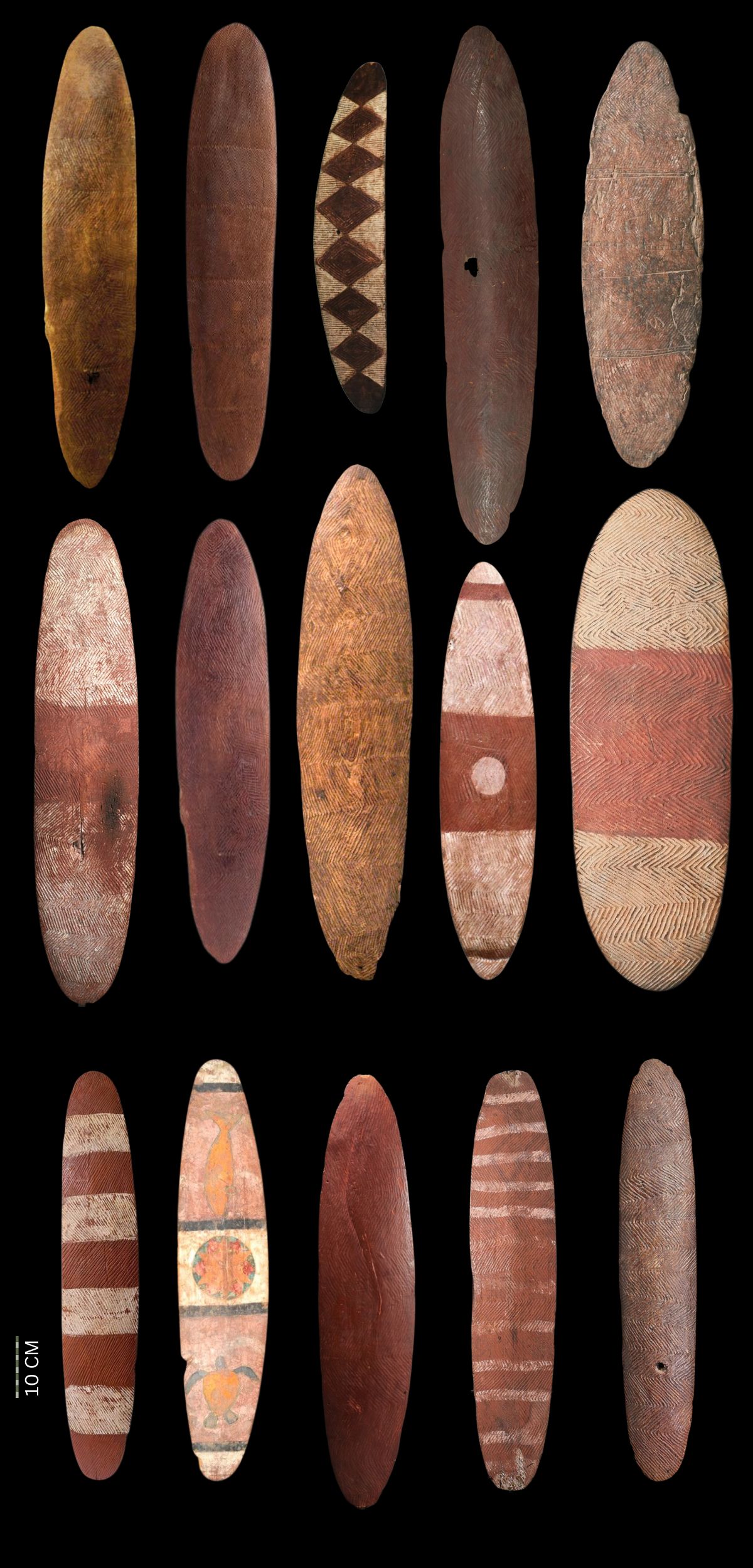Aboriginal Bardi Shield
Bardi Shields
Bardi shields come from the Bardi people that occupy the Dampier peninsula of the Kimberley region. The shields of the Bardi people were predominantly used for defence against thrown boomerangs. Unlike other aboriginal shields that were for parrying club or deflecting shields the Bardi people conducted tribal disputes predominantly with boomerangs and shield.
If you have what you believe is an old bardi Shield please feel free to send me some images of front back and size along with dimensions and i will be happy to give you an estimate as to what it may be worth.
Photo on Right:
There is little written information regarding Bardi interclan warfare and tactics. Early photographs of Bardi Warriors however show three major weapons, shields, boomerangs and spears.

Bardi Shields: Info for Collectors
The shields are usually between 60 to 80 cm in length having a curved front and recessed handle. The recessed handle is often only large enough to fit the front of the fingers to the knuckles and not the whole fist. A shields handle should not rise above the overall form.
The front of the shield is often incised with finely incised parallel zigzag lines and additionally painted in red ochre and white clay. The incised parallel grooving has similarities to the better known Wunda shields from further south in Western Australia.
These shields are curved when viewed in profile giving them a very aesthetic 3 dimensional form. The reverse of shields are also often incised with parallel line patterns.
Bardi shields were not only used in clan clashes but also played an important part in ceremony. Some Bardi shields are painted with clan motifs and likely made more for ceremonial purpose than war fare.
The Bardi people are also well known for their pearl shell pubic covers which are also incised with traditional clan motifs.
There are not many collectors for Bardi Shields, it is a very small market made up of some very enthusiastic collectors.

The Bardi People
The Bardi people belong to the broader group of Aboriginal peoples that occupy the Kimberley region of Western Australia, an area known for its diverse landscapes. Bardi, specifically, have historically lived along the coastline of the Dampier Peninsula, where the sea and marine life have played a critical role in shaping their way of life.
For thousands of years, the Bardi people maintained a semi-nomadic lifestyle, moving between seasonal campsites to harvest resources from both the land and the sea. Their diet primarily consisted of seafood, such as fish, crabs, and shellfish, along with fruits, tubers, and plants gathered from the land. The Bardi also hunted land animals such as kangaroos, wallabies, and other small mammals, while also making use of the rich variety of bush foods.
Bardi society was traditionally organized around extended family groups, or “clans,” each with its own territory or “country.” These family groups were closely connected to their ancestral lands and followed traditional laws that governed everything from land use and hunting practices to social relationships and ceremonial duties.
All images in this article are for educational purposes only.
This site may contain copyrighted material the use of which was not specified by the copyright owner.
Further reading
